The microbiome research has been expanded over the last decade with extensive research published in many fields – including dermatology, oncology, neurology – where some light has being shed on how the microbiome could be beneficial for our health rather than just being detrimental as long believed (1–3).
The microbiome represents the genome of microbiota or microorganisms such as bacteria, yeast, fungi, viruses, mites… that live within us. A recent evaluation estimated the total number of bacteria inhabiting the human body being close to 40 trillion for 30 trillion of human cells, which at the skin level represents 55 billion of bacteria per square meter (4). With these numbers, it is quite hard to imagine that it took us so long to get interested in these little organisms!
But why is the fascination just starting now?
Microbiome research got a kick start about 10 years ago, when the NIH funded a large program aiming to characterize the human microbiome and to understand how it could influence human health. While long being investigated for environment-related applications, the Human Microbiome Project (HMP) helped unravel fundamental characteristics of the microbiome in several organs including the skin (5).
While defining the microbial landscape of our skin, mouth, lungs or intestine, researches highlighted that the microorganisms that live within us are quite unique to one individual even if they can be generally defined as communities found in all human beings (6). What makes everyone’s microbiota so special comes from one’s history: from the way we were born, to the very first exposures to environmental factors, the lifestyle, the medical history. A baby born by natural delivery will have a much richer skin microbiota than a baby born by C-section, who will not be exposed to its mother vaginal microbiota (7). It is even suggested now that microbiota develops in utero (8). Early exposure to antibiotics will have devastating effects on the microbiota community richness and favor what is called scientifically “dysbiosis”, meaning a disequilibrium in the microorganism population with generally one group of microorganisms overpopulating the others. The lifestyle including diet, sleep, smoke habits will favor some microorganisms over others by providing their preferred food source or creating physicochemical conditions that would favor their growth. In addition to these external factors, the host’s genetical background will influence the microorganisms it welcomes, by the physical and chemical environment it provides (9).
The skin microbiome will develop and organize itself as we grow and become site specific with oily, dry and moist areas bearing their own set of microorganisms (10). The same way the host influences the composition of its microbiome, it has been shown that the microbiome influences the host’s well-being. During development, skin commensals (bacteria naturally living on our skin) will instruct our immune system to develop tolerance toward them, while fighting foreign bacteria or pathogens (11–13). The skin microbiota has also been linked to a stronger skin barrier function, with studies showing that skin lacking a microbiome was weaker and could not respond to external assaults as well as a microorganism-populated skin, because it missed some essential structural components (14,15).
When looking at the relationship between the microbiome and diseases of the skin, studies have shown how a dysregulated microbiome can impact and contribute to conditions such as eczema or acne (9). In both pathologies, it appears that one specific specie becomes pathogenic and overcomes all the other microorganisms, starting to trigger skin damage, including uncontrolled inflammation. How such an event can happen is still unclear, but some argue that bacteria can either acquire virulent features by serial mutations or horizontal gene transfer (thanks to an inactive CRISPR/Cas locus) or express virulent toxins and enzymes by the activation of the quorum sensing (a system regulated by population density and enabling bacteria to sense and communicate with their environment through signal molecules) (13,16).
Because of the control the microbiome can have over skin integrity and health, new therapies are emerging to try restoring a lost balance in the microbiome. Different strategies have been proposed with some already being used in clinical trials in the dermatology field. Some researchers are using either commensal bacteria able to inhibit or kill the pathogen (and using what is called quorum quenching – inhibition of the quorum sensing); or bacteriophages (viruses that infect and can kill bacteria) (17,18). Some therapies are also trying to replace the lost bacterial communities by transferring the skin microbiota of healthy individuals (microbiota transplants) (19,20).
But the enthusiasm about skin microbiome research has not been only restricted to the dermatology field, it has also gained traction in the personal care industry, which aims to improve or maintain one’s microbiome as a part of a healthy skin routine. That said, even if health benefits of the microbiome are becoming quite striking, it is still hard to materialize this thought at the consumer level. However, the personal care industry is working its way through by notably taking advantage of all the work that has been done by the food industry. Nowadays, more and more brands (from indie to well established brands) provide products containing food sources for health associated bacteria such as prebiotics and bacteria lysates or ferment extracts – as we can assume that the metabolism of commensal bacteria provides molecules contributing to skin health (21). Unfortunately, the latter two are often improperly labeled as “probiotics” to help the consumer understand the product. Beyond the technical challenges that represent working with real probiotics, i.e. live microorganisms, we have to keep in mind that the consumer might simply not be ready yet to apply consciously live microorganisms on its skin.
Nevertheless, it is with joint effort and by promoting clear information and education, that this paradigm will change. We are fortunate enough to live in this new exciting technological era enabling us to dive even deeper in our understanding of the microbiome and in the development of appropriate microbiome-related products.
References:
- Chen J, Douglass J, Prasath V, Neace M, Atrchian S, Manjili MH, et al. The microbiome and breast cancer: a review. Breast Cancer Res Treat. 2019 Dec;178(3):493–6.
- Mohajeri MH, Brummer RJM, Rastall RA, Weersma RK, Harmsen HJM, Faas M, et al. The role of the microbiome for human health: from basic science to clinical applications. Eur J Nutr. 2018 May;57(Suppl 1):1–14.
- Byrd AL, Belkaid Y, Segre JA. The human skin microbiome. Nat Rev Microbiol. 2018;16(3):143–55.
- Sender R, Fuchs S, Milo R. Revised Estimates for the Number of Human and Bacteria Cells in the Body. PLoS Biol. 2016 Aug;14(8).
- Human Microbiome Project – Overview. Available from: https://commonfund.nih.gov/hmp/overview
- Lloyd-Price J, Abu-Ali G, Huttenhower C. The healthy human microbiome. Genome Med. 2016 27;8(1):51.
- Dominguez-Bello MG, De Jesus-Laboy KM, Shen N, Cox LM, Amir A, Gonzalez A, et al. Partial restoration of the microbiota of cesarean-born infants via vaginal microbial transfer. Nat Med. 2016 Mar;22(3):250–3.
- Walker RW, Clemente JC, Peter I, Loos RJF. The prenatal gut microbiome: are we colonized with bacteria in utero? Pediatr Obes. 2017;12 Suppl 1:3–17.
- Dréno B, Araviiskaia E, Berardesca E, Gontijo G, Sanchez Viera M, Xiang LF, et al. Microbiome in healthy skin, update for dermatologists. J Eur Acad Dermatol Venereol JEADV. 2016 Dec;30(12):2038–47.
- Kong HH. Skin microbiome: genomics-based insights into the diversity and role of skin microbes. Trends Mol Med. 2011 Jun;17(6):320–8.
- Naik S, Bouladoux N, Wilhelm C, Molloy MJ, Salcedo R, Kastenmuller W, et al. Compartmentalized control of skin immunity by resident commensals. Science. 2012 Aug 31;337(6098):1115–9.
- Naik S, Bouladoux N, Linehan JL, Han S-J, Harrison OJ, Wilhelm C, et al. Commensal–dendritic-cell interaction specifies a unique protective skin immune signature. Nature. 2015 Apr 2;520(7545):104–8.
- Parlet CP, Brown MM, Horswill AR. Commensal Staphylococci Influence Staphylococcus aureus Skin Colonization and Disease. Trends Microbiol. 2019 Jun;27(6):497–507.
- Meisel JS, Sfyroera G, Bartow-McKenney C, Gimblet C, Bugayev J, Horwinski J, et al. Commensal microbiota modulate gene expression in the skin. Microbiome. 2018 30;6(1):20.
- Chen YE, Fischbach MA, Belkaid Y. Skin microbiota-host interactions. Nature. 2018 24;553(7689):427–36.
- Horvath P, Barrangou R. CRISPR/Cas, the immune system of bacteria and archaea. Science. 2010 Jan 8;327(5962):167–70.
- Williams MR, Costa SK, Zaramela LS, Khalil S, Todd DA, Winter HL, et al. Quorum sensing between bacterial species on the skin protects against epidermal injury in atopic dermatitis. Sci Transl Med. 2019 May 1;11(490).
- Castillo DE, Nanda S, Keri JE. Propionibacterium (Cutibacterium) acnes Bacteriophage Therapy in Acne: Current Evidence and Future Perspectives. Dermatol Ther. 2019 Mar;9(1):19–31.
- Perin B, Addetia A, Qin X. Transfer of skin microbiota between two dissimilar autologous microenvironments: A pilot study. PloS One. 2019;14(12):e0226857.
- Hendricks AJ, Mills BW, Shi VY. Skin bacterial transplant in atopic dermatitis: Knowns, unknowns and emerging trends. J Dermatol Sci. 2019 Aug;95(2):56–61.
- 35 Microbiome Skincare Products. TrendHunter.com. Available from: https://www.trendhunter.com/slideshow/microbiome-skincare
-

Dr. Carine Mainzer joined Silab in 2016 as a Scientific Support Manager. Before joining Silab, Dr. Carine Mainzer was a postdoctoral scholar in the Department of Dermatology at University of California San Francisco under the supervision of Dr. Peter Elias and Dr. Yoshikazu Uchida, where her work focused on the communication between inflammatory cells and cutaneous cells under bacterial challenges. She obtained her Ph.D. from the University of Lyon (France) in 2014 with work focused on the involvement of the Insulin-like growth factor (IGF)-1 on epidermal differentiation and aging. Dr. Carine Mainzer has been within the cosmetic industry since several years now, working notably with Johnson & Johnson Consumer France, Natura and Silab. Her current position offers her the opportunity to continue applying her scientific expertise to the research problematics of the cosmetic industry in various domain around skin.

